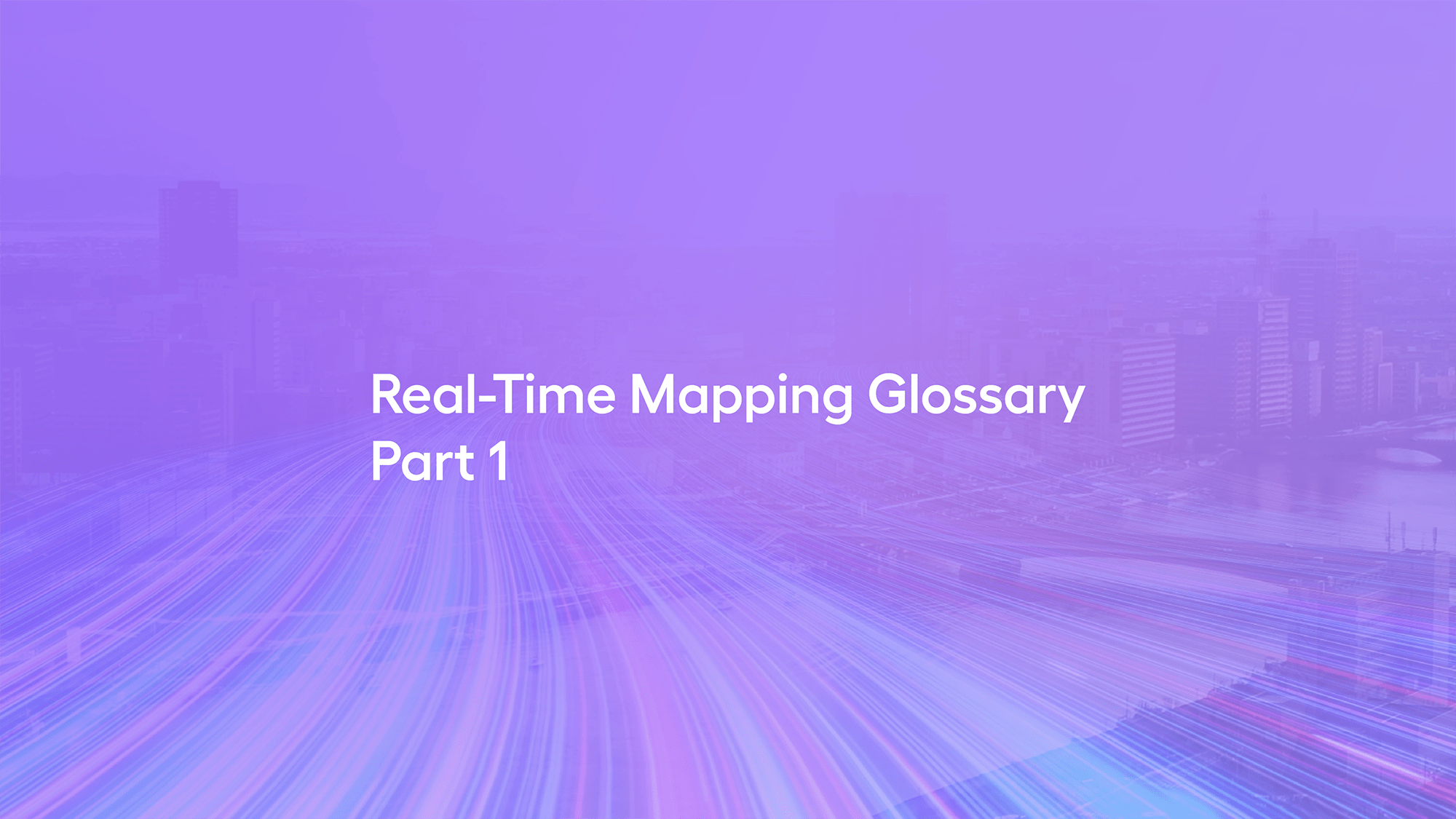Real-Time Mapping: A glossary of top 100+ terms and acronyms (Pt. 1)

This glossary offers over 100 definitions for common terms in the context of real-time mapping. As a guiding principle, we opted to include generally accepted definitions as well as to explain (whenever appropriate) how each entry applies to the key concepts in real-time mapping.
A
Advanced Driver Assistance Systems (ADAS) – hardware and/or software that automate safety actions, provide warnings, and can temporarily control over a vehicle’s steering, braking, or acceleration to minimize or avoid safety risks.
Aerial photography – method for mapping and remote sensing that uses high quality images of ground features taken from high altitude for example by airplanes, helicopters or drones.
AI model — a software program in artificial intelligence (AI) that has been trained on a set of data to perform specific tasks like recognizing certain patterns.
Alert – notification triggered by a real-time detection of an anomalous event.
Application Programming Interface – a software interface that allows a user to access some information or some functionalities from another service and integrate them into their own application.
Applications, Apps – a software that enables users to access an information or service.
Artificial Intelligence (AI) — computer systems able to perform tasks normally requiring human intelligence, such as visual perception, decision-making, etc.
Automated driving – a process in which vehicle operations are carried out automatically via hardware and/or software.
Automatic detection – a process that identifies an object of interest in an image.
Autonomous vehicles – vehicles that use sensors and software to drive themselves.

B
Behavioral map – a diagrammatic representation or collection of data showing the way in which drivers act in specific locations.
C
Change detection — a process that identifies in an image whether an object of interest is different from a previous image taken at the same location.
CityStreamTM — the real-time mapping platform built by Nexar Inc.
Crowdsourcing – a process by which a large number of people and/or devices collect data, typically via the internet.
Collision – an event in which a moving object strikes violently against another object.
Collision detection – a process or algorithm that identifies a collision from sensor data.
Collision reconstruction – a process or algorithm that delivers a description of how a collision occurred based on sensor data.
Contextual data – information that describes the setting for an event, vehicle or object of interest.
Commercial fleets — a group of vehicles engaged in the same economic activity or under the same ownership.
Crawler — a software program that systematically browses a collection of data to deliver an index of data.
D
Dash-cams — a video camera mounted on the dashboard or windscreen of a vehicle and used to continuously record the view of the road, traffic, etc. and/or interior of the vehicle.
Data — a piece of information from which inferences may be drawn.
Data aggregation — the process by which related data is clustered together in a way that is meaningful for the user.
Data curation — the process of selecting, organizing, and presenting data in a way that meets the needs of the user.
Data format — a defined structure for the processing, storage, or display of data.
Data lake — a system or repository of data stored in its natural/raw format.
Data refinement — a process that ensures that the data put into a data analytics platform is relevant, homogenized and categorized in a way that is meaningful for the user.
Deduplication — the elimination of duplicate or redundant information, for example images that show the same object of interest in the same location.
Detection — the process of identifying an object of interest in a certain location.
Digital maps – inventories and/or structured lists of features and objects of interest that are pinned to the real-world via longitude and latitude with a semantic layer of connectivity.
Distributed Storage — the process or collection of processes that splits data across multiple physical servers, and often across more than one data center
Dedicated mapping fleet —a collection of vehicles used exclusively to collect road data for digital maps.
Driver behavior — a description of how drivers act in certain locations or situations.
Dynamic location based service — a software service that requires knowledge about the geographic location of the user which changes over time.
Dynamic data — collected in less than a second, such as cars, bikes, pedestrians, etc. —

E
Eyes on the road — the collection of vehicle cameras or dash-cams that run detections and collect road information.
Edge computing —a distributed information technology architecture in which data is processed at the periphery of the network close to the originating source.
Edge AI — a distributed information technology architecture in which AI models are applied at the periphery of the network close to the originating source.
Edge devices — computer systems that operate the periphery of the network.
More Real-Time mapping terms can be found in part 2.
References
[1] Merriam-Webster's Collegiate Dictionary [link]
[2] Oxford Dictionary of English [link]
[3] National Geographic Glossary [link]
[4] Wikipedia [link]
[5] Law Insider Dictionary [link]


